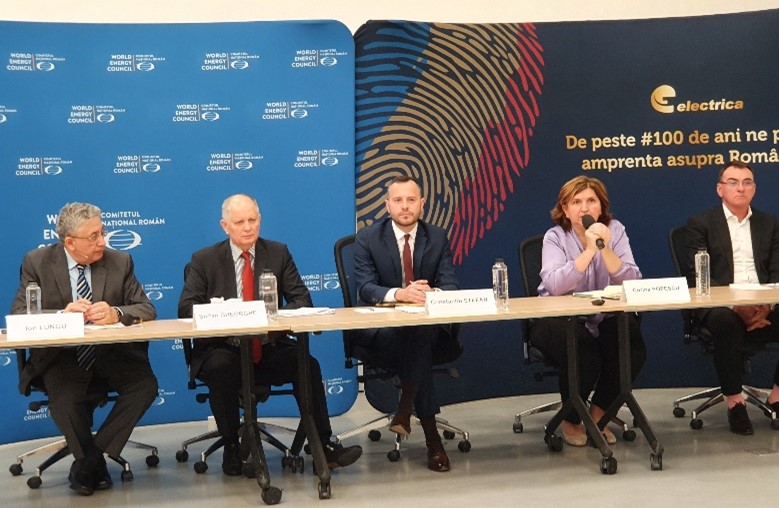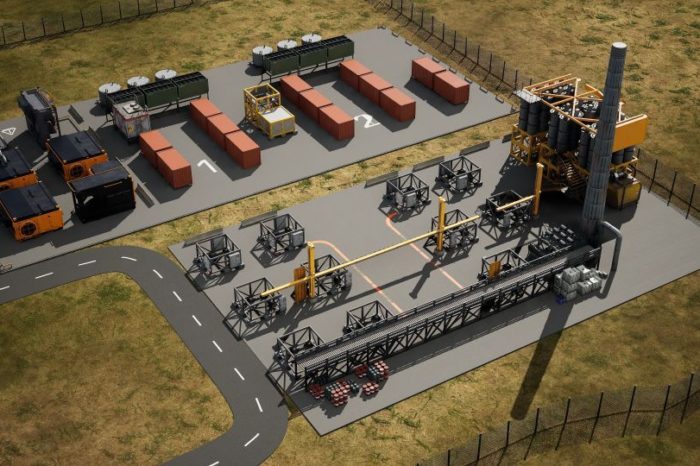Corina Popescu, Electrica: “We need clear studies to show us how to go through the energy transition period under stress“

Organized on April 6, 2022, by CNR-CME and Electrica Furnizare SA, in partnership with AFEER, ACUE, HENRO and IRE, the conference “The market model in the field of electricity: functionality and possible amendments” took place in the context of various crises that they have impacted both the Romanian society in recent years and the field of electricity markets.
The causes of these crises are many, starting from the very structure of the energy sector to the sharp imbalance of supply and demand, to which are added new development restrictions imposed by the ambitious targets of the European Union. Imperfections translate into price signals that have become unbearable for the average consumer, especially for the vulnerable consumer. It is therefore clear that it is time for a clear analysis of the current situation and the establishment of appropriate measures.
The conference aimed to conduct a proper analysis of electricity markets and to identify short-, medium- and long-term directions and measures to improve the current situation. Solutions for increasing the functionality of electricity markets in the face of increased energy system complexity, interconnection of electricity markets, the influence of external action, and risk assessment in the electricity market were also discussed.
The event was attended by decision makers from the Central Authorities (Ministry of Energy and ANRE), operators in the energy sector (CEZ, ENEL, Electrica, Transelectrica), professional associations (CNR-CME, IRE, AFEER, HENRO, RWA), as well as representatives of the academic environment (UPB).
The speakers addressed issues related to the current problems of the electricity market and the need to adapt in the conditions imposed by the increase of electricity demand, the objectives regarding the decarbonisation targets of the electricity generation sector, the need to promote renewable sources with electricity systems. energy storage, problems with the electricity distribution system, the emergence of virtual power plants.
A number of short-, medium- and long-term directions and measures have been put forward to improve the current situation and solutions have been proposed to increase the functioning of electricity markets in the face of increased energy system complexity, interconnection of electricity markets and the influence of actions. external. Market risk assessment was also addressed.
A number of important messages were conveyed at the conference.
“We are currently facing an energy crisis, in addition to the crisis caused by the war in the east of our country. The Ministry of Energy aims to support domestic and non-domestic consumers, by adopting GEO no. March 27/18, 2022, regarding the measures applicable to final customers in the electricity and natural gas market between April 1, 2022, and March 31, 2023, as well as for the modification and completion of some normative acts in the field of energy. We need to look back at traditional energy producers and, to this end, there is already a medium-term reorganization plan for the Oltenia Energy Complex, by developing eight in situ photovoltaic parks, by diversifying electricity production, and by developing a a block with an installed capacity of 750 MW, a 475 MW gas-fired power plant in Ișalnița and a block of approximately 850 MW in Turceni, together with Ișalnița ”, said at the opening of the conference Constantin Ștefan, Secretary of State at the Ministry of Energy . He also mentioned that investments in renewable energy production capacity should be continued and that steps should be taken at the Ministry of Energy to develop the National Strategy for Hydrogen Production.
Three important challenges were identified for the ODs, as follows: a) reduction of CPT, b) measurement of electricity and c) integration into the electricity grid of energy producers and consumers (prosumers). “We need clear studies that show us how we manage to go through the period of energy transition under stress, what we can assume and what projects should be supported. It is an obligation for all specialists in the energy sector to put on the table clear studies that define a portfolio of strategic projects that we can support through a legislative amendment, which will make it possible to accelerate them,” said Corina Popescu, CEO of Electrica.
The following aspects were also highlighted:
Concentration of electricity production in a single area (for example, in Romania – Dobrogea area) leads to an increase in CPT about three times, based on very clear technical conditions studied; • At the Transmission and System Operator, Transelectrica, there is a program to replace the transformation units, which leads to a decrease in its own technological consumption; • There are three solutions for developing Energy Storage projects: Energy storage as an independent storage, “Back-up” storage – as an internal business of a renewable energy producer (volatile) and customer storage. • According to EU Regulation No. 943/2019 on the market “The electricity market model is one implemented in 2012, rigid, a model with many restrictions, in which direct trading was not allowed, which did not allow the conclusion of PPAs, a market model in which only standardized products could be traded, a market model that lacked hedging and modern profiling products, futures derivatives. Only one license was granted to the electricity market operator, which led to the disappearance of competition in this segment. And where did all this go? They led to a lack of investment, to discouraging investors, to pushing trading to the spot market “, said Claudiu Dumbrăveanu – General Manager, Energy and Prices Market Directorate within ANRE, who also said that solving the electricity deficit and prices are not necessarily achieved through a new market model, but by finding ways to stimulate investment. Three aspects are highlighted: 1) The flexibility of the electricity network must be increased depending on the capacity of the National Energy System; 2) Realization of the interconnection of the Romanian electric power system with the electric power systems of Ukraine and the Republic of Moldova; 3) Improving the collaboration between the Transmission System Operator (TSO) and the Distribution System Operator (SDG).
The main problem for the Electricity Distribution Operators is the provision of money for the operation.
“CPT expenses exceed the budget for the entire activity. We are heading towards insolvency,” said Valeriu Binig, director within ENEL. “Practically, the distribution operators do not have the expenses for purchasing the energy necessary for their own technological consumption covered in the budget. To cover the losses from 2021, starting with April 1, 2022, the distribution tariffs have increased. For the year 2022, the possible source of financing is not identified (the state budget, the money of the shareholders or the money of the consumers),” Binig added.













